Brazil is renowned for its incredible biodiversity, with a diverse array of plant and animal species that are unique to the region. However, this biodiversity is facing significant threats due to deforestation and global warming. It is crucial to implement conservation efforts and sustainable practices to protect Brazil’s precious biodiversity and preserve its natural ecosystems.
In this article, we will explore the impact of global warming and deforestation on Brazil’s biodiversity, focusing on the Amazon rainforest and the Cerrado hotspot. We will also delve into the importance of biodiversity in the built environment, including sustainable architecture, urban planning initiatives, and green infrastructure development. Furthermore, we will discuss the role of environmental impact assessments and wildlife protection measures in preserving Brazil’s biodiversity.
By understanding the value of biodiversity and integrating conservation practices into the built environment, we can create a sustainable future that safeguards Brazil’s unique species and contributes to the well-being of both nature and society.
Key Takeaways:
- Brazil’s biodiversity is under threat from deforestation and global warming.
- Conservation efforts and sustainable practices are essential to protect Brazil’s biodiversity.
- The Amazon rainforest and Cerrado hotspot are particularly vulnerable ecosystems.
- Biodiversity in the built environment plays a vital role in supporting urban ecosystems and providing ecosystem services.
- Integrating biodiversity considerations into construction projects and urban planning can help preserve Brazil’s biodiversity.
The Impact of Global Warming and Deforestation
Global warming and deforestation have dire consequences for Brazil’s biodiversity and pose significant threats to its unique wildlife and natural habitats. The effects of these two interconnected issues are far-reaching and demand urgent attention and action to safeguard Brazil’s rich biodiversity.
Exceeding temperature targets set in the Paris Agreement would have devastating consequences for the country’s wildlife, including endangered species such as the Brazilian merganser and blue-eyed ground dove. These iconic creatures face an uncertain future as their habitats are increasingly affected by rising temperatures and changing climatic conditions.
One of the most visible and alarming impacts of deforestation is the loss of the Amazon rainforest. Already, a fifth of its once-flourishing forests has been lost, bringing it perilously close to irreversible damage. This massive loss of habitat not only endangers the countless unique species that call the Amazon home but also exacerbates climate change. The Amazon rainforest plays a crucial role in global carbon sequestration, and its destruction contributes to the release of greenhouse gases, further accelerating global warming.
Deforestation activities, such as the expansion of cattle ranching and soy farming, continue to put more than 10,000 species in the Amazon at risk. These destructive practices not only directly destroy habitats but also lead to habitat fragmentation and ecological imbalance. The Amazon rainforest, often referred to as the “lungs of the Earth,” is a vital ecological sanctuary that must be protected to ensure the survival of diverse flora and fauna.
The Cerrado hotspot, Brazil’s second-largest biome after the Amazon rainforest, is also under threat from deforestation and land conversion for agriculture and urbanization. This vast savanna biome is home to an astonishing array of plant and animal species, many of which are endemic and endangered. The ongoing deforestation and destruction of the Cerrado place countless species at risk of extinction, further underscoring the urgent need for conservation efforts.
The time for action is now. It is crucial to address the impact of global warming and deforestation on Brazil’s biodiversity to protect threatened species, preserve vital ecosystems, and ensure a sustainable future for both wildlife and human populations.
The Amazon Rainforest: A Precious Ecosystem at Risk
The Amazon rainforest is an irreplaceable treasure of biodiversity, housing an incredible array of plant and animal species. However, the future of this invaluable ecosystem hangs in the balance due to rampant deforestation. The loss of forests in the Amazon basin not only exacerbates the impacts of climate change but also raises the specter of species extinctions.
https://www.youtube.com/watch?v=Tk9BntFE_BY
“The Amazon rainforest is a critical piece of our planet’s natural heritage,
and its conservation is of paramount importance to ensure the well-being not only of Brazil but the entire world.” – Environmentalist Jane Goodall
Deforestation in the Amazon region is primarily driven by activities such as cattle ranching and soy farming. These practices put more than 10,000 species at risk of losing their habitats, threatening their very existence. Unique creatures, like the minuscule orange frog and collared titi monkey, are now facing uncertain futures as their homes are destroyed.
The consequences of losing the Amazon rainforest and its biodiversity would be far-reaching. Beyond the immediate impact on the countless species that call it home, the destruction of this ecosystem would disrupt vital ecological processes and exacerbate climate change. The Amazon rainforest serves as a massive carbon sink, playing a critical role in mitigating global warming.
Protecting the Amazon rainforest is not only a matter of local or regional concern but a global imperative. Conservation efforts and sustainable land use practices are essential to safeguarding this fragile yet resilient ecosystem. By promoting responsible agriculture, supporting local communities, and enforcing stricter regulations, we can ensure the preservation of the Amazon rainforest and the myriad of life it sustains.
The Endangered Species of the Amazon Rainforest
The Amazon rainforest is home to a multitude of endangered species whose existence is threatened by deforestation. Some of the notable endangered species found in the Amazon include:
| Endangered Species |
Threat Level |
| Brazilian Merganser |
Critically Endangered |
| Blue-eyed Ground Dove |
Critically Endangered |
| Jaguar |
Near Threatened |
| Giant Anteater |
Vulnerable |
| Pink River Dolphin |
Endangered |
These incredible species, along with countless others, face an uncertain future if action is not taken to preserve their habitats and combat deforestation. Protecting the Amazon rainforest is essential not only for their survival but for the long-term health of our planet.
Brazil and the international community must come together to prioritize the conservation of the Amazon rainforest. Its preservation will not only safeguard the unique species that inhabit it but also contribute to the protection of the world’s biodiversity and the well-being of future generations.
Brazil’s Remarkable Wildlife in Peril
Brazil boasts an incredible array of diverse wildlife, making it a hotbed of biodiversity. However, this remarkable wildlife is facing a grave threat due to deforestation and habitat loss. Species such as the majestic jaguar and the playful giant otter are now endangered, their populations dwindling as their habitats are destroyed.
“The loss of biodiversity in Brazil not only affects individual species but also disrupts entire ecosystems,” says Dr. Ana Silva, a renowned wildlife biologist. “Plants, insects, and other animals that depend on these habitats are also at risk, leading to a domino effect that can have far-reaching consequences.”
The destruction of natural habitats not only puts specific species at risk of extinction but also has a cascading impact on the delicate balance of ecosystems. Brazil’s unique flora and fauna are deeply interconnected, and the loss of a single species can have a chain reaction of negative effects on the surrounding environment.
Conservation efforts and sustainable practices are crucial for safeguarding Brazil’s remarkable wildlife and ensuring the long-term survival of these species. With concerted efforts, it is possible to reverse the tide of deforestation and protect the biodiversity that makes Brazil’s ecosystems so extraordinary.
The Impact of Deforestation on Wildlife
Deforestation, driven by activities such as agriculture, logging, and urban expansion, is the leading cause of habitat loss in Brazil. As vast tracts of land are cleared, wildlife populations are left without suitable habitats and are forced into smaller and more fragmented areas. This fragmentation can lead to increased competition for resources and a higher susceptibility to disease and predation.
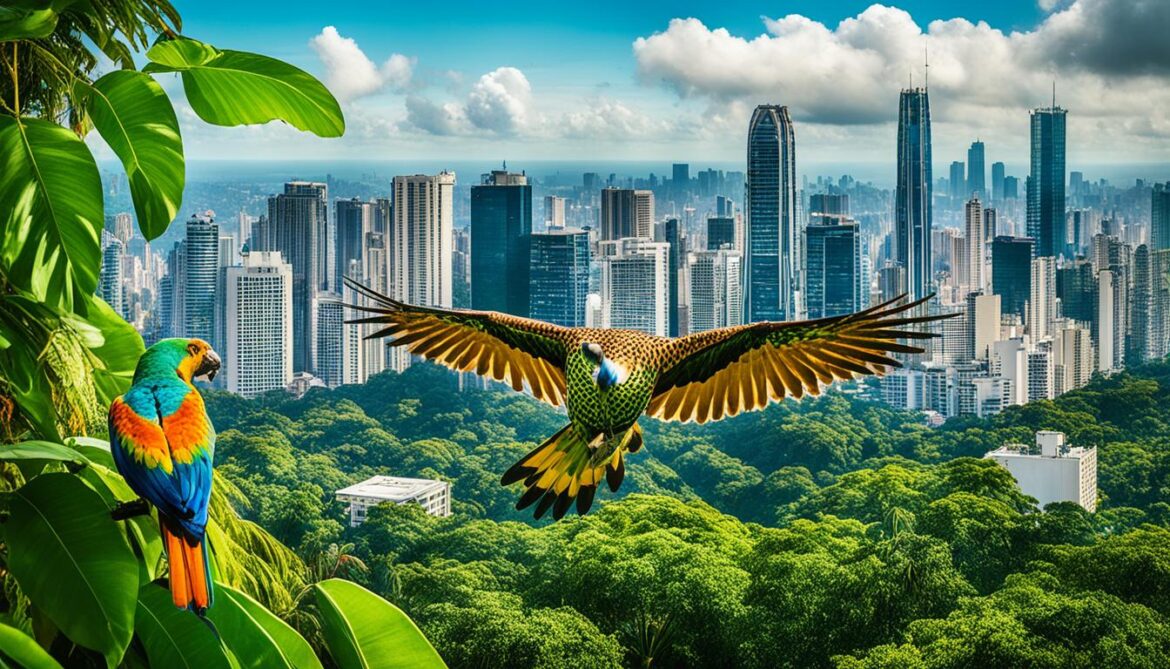
“The destruction of habitats through deforestation disrupts the delicate balance of ecosystems and jeopardizes the survival of countless species,” warns Dr. Maria Santos, an expert in conservation biology. “If we continue down this path, we risk losing not only biodiversity but also essential ecosystem services that are crucial for human well-being.”
Brazil’s Conservation Efforts
Brazil recognizes the importance of preserving its wildlife and has implemented several conservation efforts to protect endangered species. One notable example is the establishment of protected areas, such as national parks and wildlife reserves, that provide safe havens for vulnerable wildlife.
The government has also taken steps to enforce stricter regulations on illegal logging and wildlife trade. These measures aim to combat the illegal activities that pose significant threats to Brazil’s wildlife and biodiversity.
The Role of Sustainable Practices
Implementing sustainable practices is key to preserving Brazil’s wildlife and biodiversity for future generations. Promoting sustainable agriculture methods, such as agroforestry and organic farming, can help mitigate the environmental impact of agriculture while still meeting the demands for food production.
Additionally, promoting eco-tourism and responsible travel can provide economic incentives for the conservation of natural areas and support local communities that depend on wildlife-based tourism.
Brazil’s Wildlife: A National Treasure
Brazil’s remarkable wildlife is not only a source of national pride but also an invaluable asset with significant ecological and cultural importance. It is a testament to the country’s rich biodiversity and unique ecosystems.
| Endangered Species |
Main Threats |
| Jaguar |
Habitat loss, illegal hunting |
| Giant Otter |
Habitat loss, pollution |
| Maned Wolf |
Habitat loss, human-wildlife conflict |
| Giant Armadillo |
Habitat loss, poaching |
| Giant Anteater |
Habitat loss, road accidents |
Protecting Brazil’s wildlife requires a collective effort, from local communities to international organizations. By preserving their natural habitats and addressing the root causes of habitat destruction, we can ensure the continued existence of Brazil’s diverse and remarkable wildlife for generations to come.
Threatened Species in Brazil
Several species in Brazil are facing the risk of extinction. The critically endangered Brazilian merganser, blue-eyed ground dove, and near-threatened maned wolf, giant armadillo, and giant anteater are among them. These unique and iconic species are vulnerable due to habitat destruction, deforestation, and other human activities.
Protecting and conserving these threatened species is essential for maintaining Brazil’s biodiversity and preserving its natural heritage.
The Cerrado Hotspot: A Forgotten Treasure
The Cerrado hotspot, Brazil’s second-largest biome after the Amazon rainforest, is a forgotten treasure of biodiversity. It is home to approximately 12,000 plant species, including many endemic and endangered species. The rich flora of the Cerrado supports a diverse range of fauna, including over 850 bird species, some of which are found nowhere else on Earth.

However, deforestation for agriculture and urban expansion is threatening this unique ecosystem. Habitat loss and fragmentation are endangering countless plant and animal species in the Cerrado.
“The Cerrado hotspot is an invaluable reservoir of biodiversity, with a rich tapestry of plant and animal life that must be protected for future generations.” – Dr. Maria Silva, Biodiversity Researcher
Conservation efforts and sustainable land use practices are needed to protect this biodiverse region and its precious species. Through collaborative initiatives and stakeholders’ engagement, we can mitigate the impact of deforestation and halt the loss of habitat in the Cerrado.
Endangered Species in the Cerrado Hotspot
The Cerrado hotspot harbors several endangered species that are at risk of extinction due to habitat destruction and loss:
- Giant armadillo
- Maned wolf
- Blue-eyed ground dove
- Giant anteater
- Marsh deer
Protecting these unique species and their habitats is crucial for the long-term sustainability of the Cerrado hotspot and the preservation of its biodiversity.
The Importance of Biodiversity in the Built Environment
Biodiversity plays a vital role in our natural world, but its importance extends beyond remote forests and untouched landscapes. Even in urban environments, biodiversity is essential for maintaining healthy ecosystems and supporting sustainable development.
The built environment, consisting of our cities and infrastructure, has a significant impact on biodiversity. By incorporating green spaces, planted roofs, and parks into urban areas, we can create habitats for birds, pollinators, and other animals. These biodiverse spaces not only provide homes for wildlife but also offer numerous ecosystem services that benefit urban life.
“Biodiversity in the built environment contributes to improved air quality, climate resilience, and the overall well-being of urban communities.”
Having green spaces in cities helps improve air quality by removing pollutants and reducing the heat island effect. Urban areas with more trees and plants experience lower temperatures, reducing the need for energy-intensive cooling systems and improving the quality of life for inhabitants.
In addition, urban biodiversity enhances climate resilience. Green spaces and biodiversity act as natural buffers against extreme weather events, such as heavy rainfall and heatwaves. They can absorb and store water, mitigate flooding, and provide natural shade and cooling. These benefits are particularly important as cities face the challenges of climate change.
Furthermore, biodiversity in the built environment contributes to the overall well-being of urban communities. Access to green spaces and exposure to nature have been proven to reduce stress, promote mental health, and increase physical activity. Urban dwellers can enjoy recreational activities, connect with nature, and develop a sense of place through the presence of biodiverse areas.
Creating Sustainable and Healthy Cities
Recognizing the importance of biodiversity in urban development is essential for creating sustainable and healthy cities. Governments, urban planners, and developers need to prioritize biodiversity in their decision-making processes and incorporate it into urban planning initiatives.
By preserving existing green spaces, creating new ones, and implementing sustainable design practices, we can ensure that biodiversity is at the forefront of urban development. This includes the protection of wildlife corridors, the establishment of green roofs and walls in buildings, and the integration of native plant species in urban landscaping.
Moreover, involving local communities in the design, maintenance, and enjoyment of urban green spaces can foster a sense of ownership and stewardship, further promoting biodiversity conservation in the built environment.
The table below highlights some of the key ecosystem services provided by biodiversity in the built environment:
| Ecosystem Services |
Description |
| Air purification |
Biodiverse urban areas help remove pollutants from the air, improving air quality and reducing respiratory health risks. |
| Flood mitigation |
Green spaces and biodiversity act as natural sponges, absorbing and storing excess water during heavy rainfall events, reducing the risk of flooding in urban areas. |
| Climate regulation |
Biodiverse urban areas provide natural shade and cooling, reducing the urban heat island effect and mitigating the impacts of climate change. |
| Noise reduction |
Vegetation and green spaces help buffer and absorb noise, creating a more pleasant and peaceful urban environment. |
| Pollination |
Urban biodiversity supports pollinators like bees and butterflies, ensuring the reproduction of flowering plants and the production of fruits and seeds. |
Integrating biodiversity into the built environment is not just beneficial for wildlife but also for the well-being and resilience of urban communities. By recognizing the value of biodiversity and adopting sustainable practices, we can create cities that are not only livable but also thriving ecosystems.
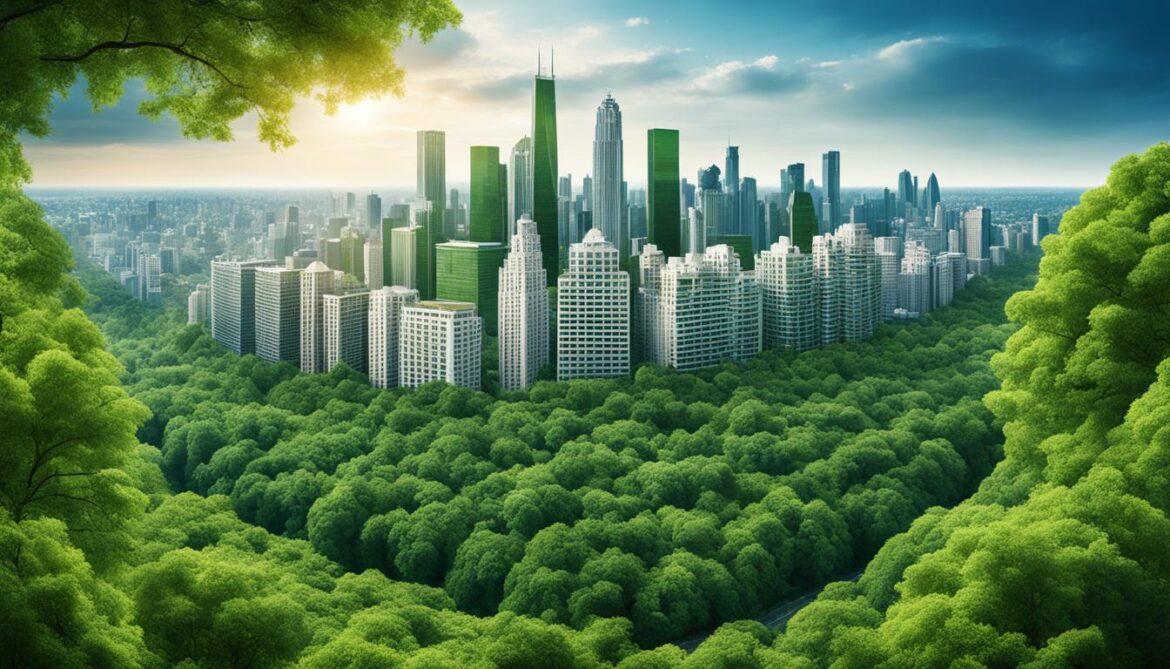
Integrating Biodiversity in Construction Projects
The construction industry plays a significant role in shaping our built environment. However, it also has a profound impact on biodiversity through habitat destruction and resource-intensive processes. Construction projects, if not executed with care, can lead to detrimental effects on natural habitats and wildlife species.
Fortunately, there is progress being made in recognizing the importance of biodiversity in the construction industry. Implementing measures to protect habitats, developing green infrastructure, and adopting sustainable practices are essential in minimizing the negative impacts on biodiversity and promoting conservation.
By emphasizing biodiversity considerations in construction projects, we can create sustainable built environments that coexist harmoniously with nature. Through conscious planning and design, the construction industry can become an advocate for habitat protection and preservation.
Measures for integrating biodiversity conservation in construction projects:
- Habitat Protection: Prioritize the protection of existing habitats within construction sites. Identify sensitive areas and adopt measures to prevent habitat destruction. (www.nelsongreerpainting.com)
- Green Infrastructure: Incorporate green spaces, such as rooftop gardens and vertical green walls, into construction projects. These features provide habitats for plants, insects, and birds, enhancing biodiversity in urban areas.
- Sustainable Practices: Implement sustainable construction practices, such as using recycled materials, reducing energy consumption, and minimizing waste generation. These practices minimize the environmental footprint of construction projects.
Integrating biodiversity in construction projects not only benefits wildlife and ecosystems but also contributes to the overall quality of life in communities. By creating green spaces and preserving natural habitats, we enhance the aesthetic appeal, air quality, and well-being of urban environments.
“Integrating biodiversity in construction projects is crucial for creating sustainable built environments that conserve natural habitats and protect the rich diversity of species.”
| Benefits of Integrated Biodiversity in Construction Projects |
| Promotes ecological balance and resilience |
| Enhances air and water quality |
| Provides natural habitats for wildlife |
| Reduces urban heat island effect |
| Improves community well-being and mental health |
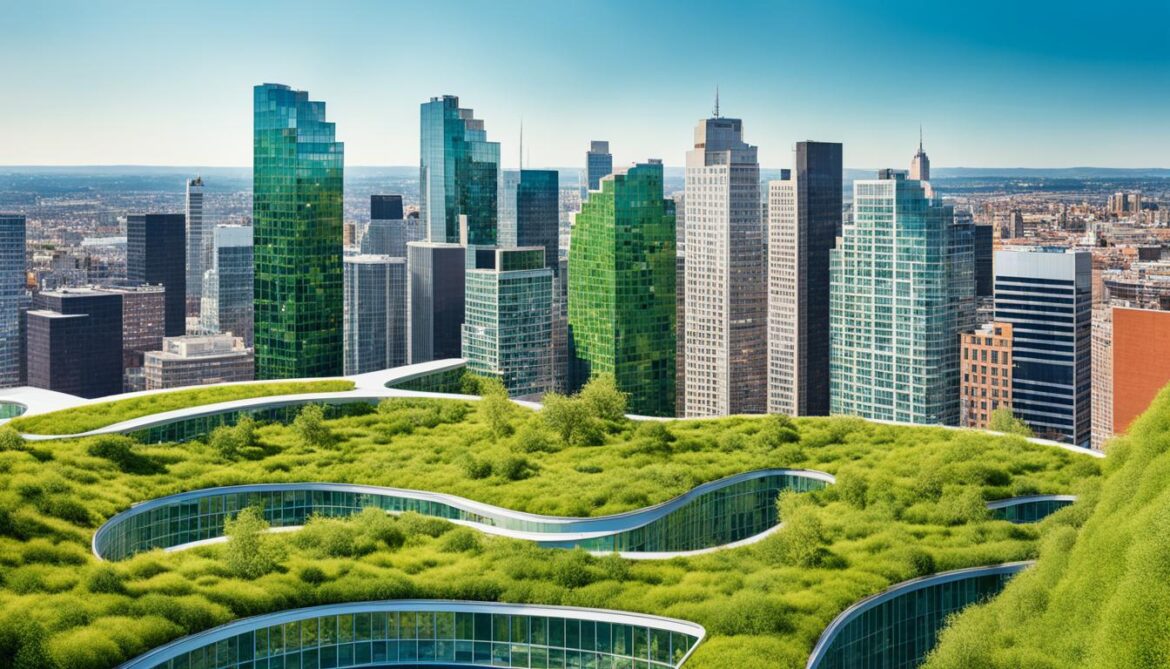
The integration of biodiversity considerations into construction projects contributes to the sustainability and resilience of our cities and communities. By prioritizing habitat protection, developing green infrastructure, and adopting sustainable practices, we can create a future where the construction industry coexists harmoniously with nature.
Fostering Multi-Species Habitats in the Built Environment
The built environment plays a crucial role in fostering multi-species habitats and contributing to biodiversity conservation. By incorporating green infrastructure and implementing measures that prioritize biodiversity, architects and urban planners can create urban spaces that support a diverse range of plant and animal species.
One way to foster multi-species habitats is by planting trees throughout urban areas. Trees provide essential habitats for birds, insects, and other wildlife, offering nesting sites, food sources, and shelter. Additionally, creating green facades and roofs on buildings can help integrate nature into the built environment, providing further habitats and improving air quality.
Establishing parks and wetlands within urban settings is another effective method of creating multi-species habitats. These green spaces serve as important refuges for a variety of species, enabling them to thrive amidst urbanization. Wetlands, in particular, support diverse ecosystems and contribute to water purification and flood control.
Supporting Biodiversity Through Habitat Preservation and Connection
To effectively support biodiversity in urban areas, it is essential to focus on habitat preservation and creating connections between habitats. Protecting existing natural areas and ensuring their conservation is vital for maintaining biodiversity in the face of urban expansion.
Creating connections between habitats is equally crucial. When wildlife can move freely between different green spaces, it enhances their ability to find resources, establish territories, and form diverse populations. This interconnectedness helps maintain genetic diversity and supports the long-term viability of species in urban environments.
“The built environment has the potential to regenerate urban biodiversity and contribute to climate change mitigation.”
Architects and urban planners are increasingly embracing biodiversity in their designs. For example, the concept of vertical forests has gained popularity in cities worldwide. Vertical forests consist of high-rise buildings covered with vegetation that provides habitats for a variety of species, improves air quality, and mitigates the urban heat island effect. This innovative approach demonstrates how the built environment can help regenerate urban biodiversity and mitigate the impacts of climate change.
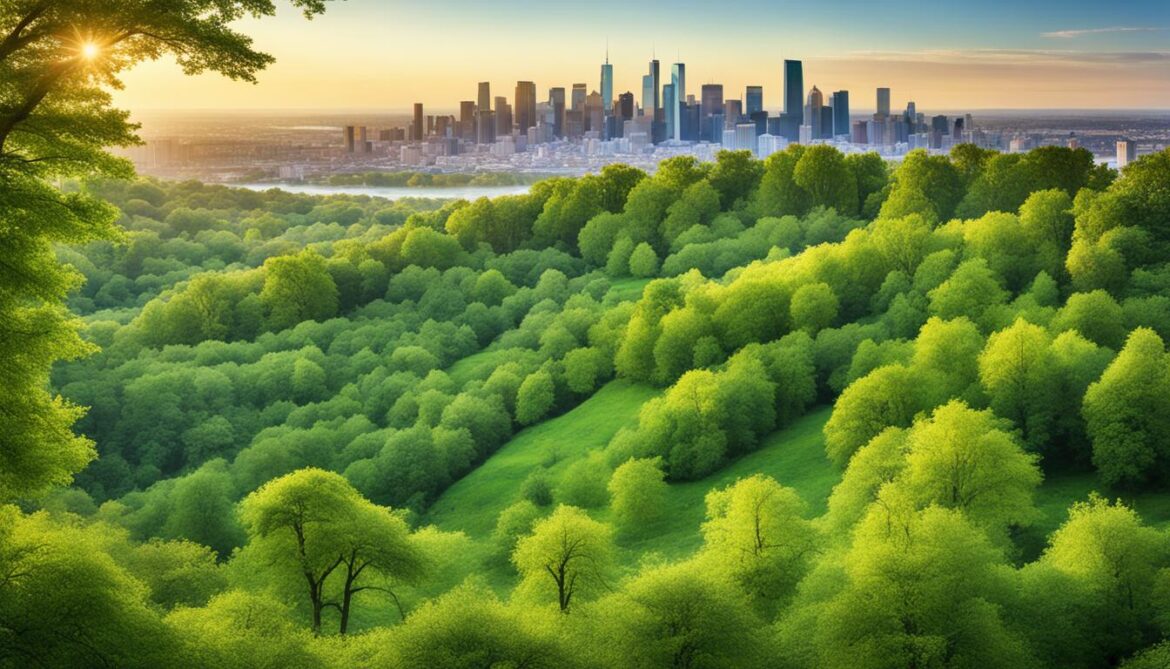
Fostering Multi-Species Habitats: A Benefit for All
Fostering multi-species habitats in the built environment benefits not only wildlife but also human beings. Access to green spaces and proximity to nature have been linked to improved mental health, reduced stress levels, and enhanced overall well-being. By prioritizing biodiversity in urban planning and design, we can create more sustainable and livable cities.
The table below highlights the key benefits and considerations of fostering multi-species habitats in the built environment:
| Benefits |
Considerations |
| Enhanced biodiversity |
Integration with urban infrastructure |
| Improved air and water quality |
Long-term maintenance and management |
| Climate change resilience |
Collaboration and coordination among stakeholders |
| Positive impact on human well-being |
Consideration of local ecosystems and native species |
By fostering multi-species habitats in the built environment through green infrastructure and biodiversity conservation, urban areas can serve as important refuges for wildlife, contribute to overall biodiversity conservation, and create healthier and more sustainable living spaces for both human and non-human inhabitants.
Biodiversity Net Gain in Construction Projects
Biodiversity net gain is a groundbreaking approach that aims to enhance biodiversity in the construction industry. It focuses on minimizing biodiversity loss and achieving measurable net gains in biodiversity. The implementation of biodiversity net gain is crucial for the long-term sustainability and resilience of our built environment.
“Biodiversity net gain ensures that we leave the natural environment in a better state than before, for the benefit of both wildlife and future generations.”
The construction industry plays a significant role in shaping our landscapes, but it can also have negative impacts on biodiversity through habitat destruction and fragmentation. To counter these effects, the UK government has introduced requirements for planning approvals in new developments.
To gain planning approval, new construction projects must demonstrate a 10% increase in biodiversity. This approach aims to embed biodiversity enhancement within development proposals, ensuring that land use changes leave the natural environment in a better state. By prioritizing biodiversity, the construction industry can contribute to the conservation and restoration of vital habitats.
Benefits of Biodiversity Net Gain
Biodiversity net gain offers a range of benefits for the construction industry and the wider ecosystem. Some key advantages include:
- Enhanced ecological resilience
- Improved air and water quality
- Increased pollination and natural pest control
- Enhanced carbon sequestration
- Creation of green spaces for communities
Biodiversity net gain also generates economic benefits, such as increased property values, improved health and well-being, and reduced maintenance costs for landscaping and stormwater management.
Implementing Biodiversity Net Gain
Integrating biodiversity net gain into construction projects requires careful planning and collaboration. Here are some practical steps for implementing biodiversity net gain:
- Conduct thorough ecological assessments to identify existing biodiversity and potential impacts of the proposed development.
- Design projects that prioritize habitat enhancement and creation, ensuring the inclusion of native plant species and diverse habitats.
- Collaborate with ecologists, landscape architects, and other experts to develop effective biodiversity enhancement strategies.
- Monitor and evaluate the success of biodiversity net gain measures post-construction to guide future projects and refine conservation efforts.
By adopting biodiversity net gain principles, the construction industry can become a driving force for positive environmental change. Together, we can create sustainable built environments that support thriving ecosystems and promote the well-being of both humans and wildlife.
| Biodiversity Net Gain Benefits |
| Enhanced ecological resilience |
| Improved air and water quality |
| Increased pollination and natural pest control |
| Enhanced carbon sequestration |
| Creation of green spaces for communities |
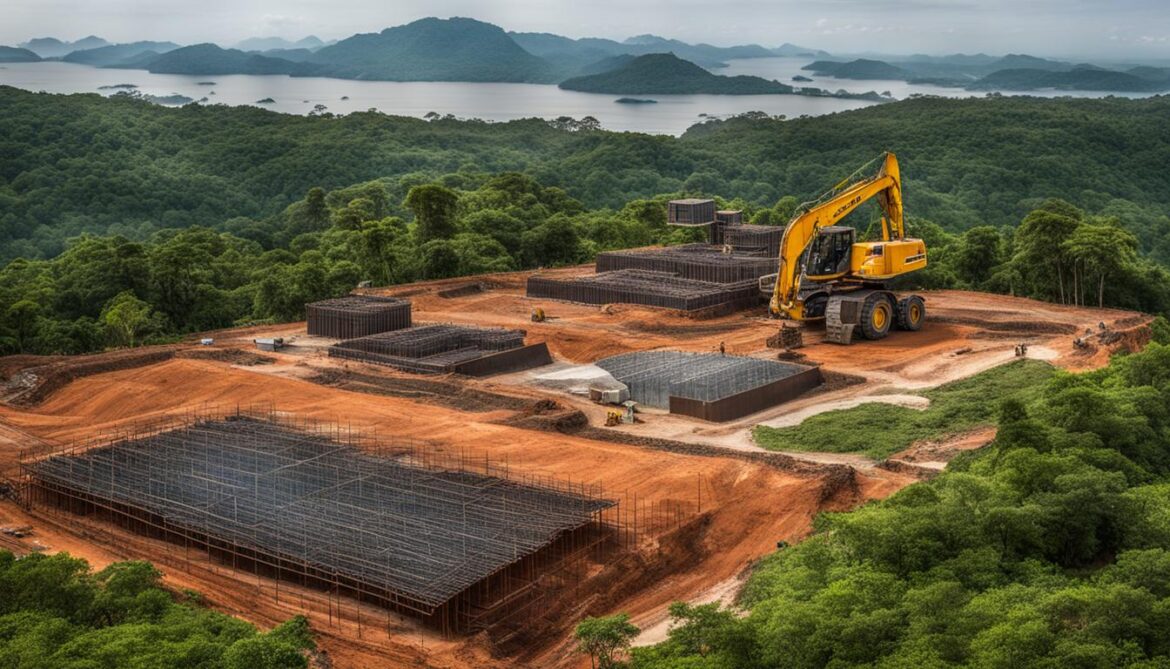
Conclusion
Brazil’s rich biodiversity and the built environment are inextricably linked, and the preservation of biodiversity is vital for achieving sustainable development. The country faces significant challenges from deforestation, habitat loss, and climate change, which demand urgent conservation efforts. Embracing sustainable practices and integrating biodiversity considerations into construction projects and urban planning are crucial steps in safeguarding Brazil’s unique plant and animal species.
Conservation initiatives must prioritize the protection of Brazil’s biodiversity. By adopting sustainable land use practices and promoting green infrastructure development, we can create a harmonious coexistence of urban environments and natural ecosystems. Preserving and enhancing urban biodiversity not only contributes to the well-being of wildlife but also offers numerous benefits to people, such as improved air quality, climate resilience, and a better quality of life.
As we move forward, it is imperative that we work towards a more sustainable and resilient future. By valuing and prioritizing biodiversity in the built environment, we can ensure that Brazil’s natural heritage remains intact for future generations. Through collaborative efforts, policy interventions, and public awareness, we can create a thriving urban environment that coexists harmoniously with nature, preserving Brazil’s remarkable biodiversity for years to come.
FAQ
What is the relationship between Brazil’s biodiversity and the built environment?
Brazil’s biodiversity is crucial for the sustainable development of the built environment. Conservation efforts and sustainable practices in construction and urban planning are essential for preserving Brazil’s rich biodiversity and creating resilient cities.
What are the major threats to Brazil’s biodiversity?
The major threats to Brazil’s biodiversity include deforestation, urban expansion, and wildlife trade. These activities lead to habitat loss, fragmentation, and the endangerment of numerous plant and animal species.
How can Brazil protect its unique species and natural ecosystems?
Brazil can protect its unique species and natural ecosystems through conservation efforts, sustainable architecture, and urban planning initiatives. Environmental impact assessments, wildlife protection measures, and the development of green infrastructure are crucial in preserving Brazil’s biodiversity.
How does deforestation and global warming impact Brazil’s biodiversity?
Deforestation and global warming pose significant threats to Brazil’s biodiversity. The loss of forests in the Amazon rainforest and the Cerrado hotspot accelerates climate change impacts, increases the risk of species extinctions, and disrupts entire ecosystems.
Which endangered species are at risk in Brazil?
Endangered species at risk in Brazil include the Brazilian merganser, blue-eyed ground dove, maned wolf, giant armadillo, and giant anteater. The destruction of their habitats through deforestation and human activities puts these species in jeopardy.
Why is the Cerrado hotspot important for biodiversity?
The Cerrado hotspot is important for biodiversity as it is home to approximately 12,000 plant species, many of which are endemic and endangered. The rich flora of the Cerrado supports diverse fauna, including bird species found nowhere else on Earth.
How does the built environment support biodiversity?
The built environment can support biodiversity by incorporating green spaces, parks, and planted roofs, which serve as habitats for birds, pollinators, and other animals. Biodiversity in the built environment contributes to improved air quality, climate resilience, and the well-being of urban communities.
How can the construction industry minimize its impact on biodiversity?
The construction industry can minimize its impact on biodiversity by implementing measures such as habitat protection, green infrastructure development, and sustainable practices. Integrating biodiversity considerations into construction projects helps preserve natural habitats and promote conservation.
What can be done to foster multi-species habitats in the built environment?
Fostering multi-species habitats in the built environment can be achieved through the creation of green infrastructure, including planting trees, establishing parks and wetlands, and connecting habitats. These initiatives aim to support biodiversity in urban areas and mitigate the effects of climate change.
What is biodiversity net gain in construction projects?
Biodiversity net gain is an approach that aims to enhance biodiversity in construction projects. It involves avoiding and minimizing biodiversity loss and achieving measurable net gains in biodiversity. This approach is increasingly required for planning approvals and promotes habitat enhancement and sustainable land use.
How can Brazil ensure the conservation of its biodiversity for sustainable development?
Brazil can ensure the conservation of its biodiversity for sustainable development by prioritizing conservation efforts, implementing sustainable practices in construction and urban planning, and recognizing the importance of biodiversity in the country’s natural and built environments.
Source Links













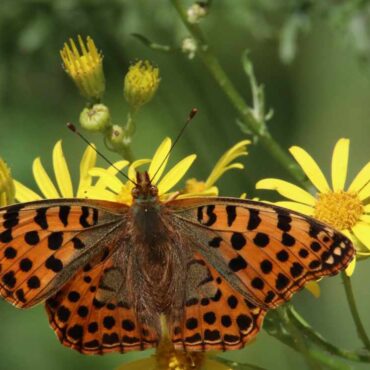
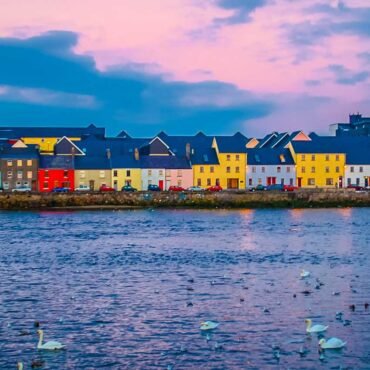









Post comments (0)